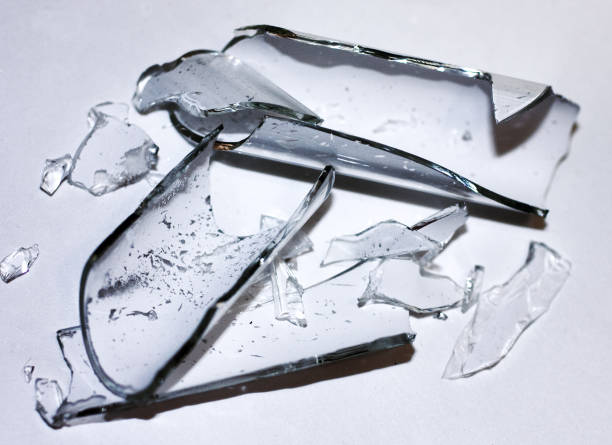Glass Disposal Procedures
Jump to a section of Glass Disposal Procedures

What can go into the glass trash?
Broken glass that is not contaminated with:
- Biohazards
- Radioactive materials
- Chemicals (gross amounts of dry or liquid)
Do not overfill glass trash; it must be able to be closed for disposal.
Biohazardous contaminated glassware
If glassware is contaminated with biohazards (media plates, etc.), these should be autoclaved before being disposed of in the regular trash (non-sharp glass only). Autoclaved waste must be tracked on the waste treatment log, and red autoclave bags must be used with the Treated Medical Waste label placed on the outside of the original red autoclave bag after autoclaving. The labeled red bag is then placed into a regular black trash bag, another Treated Medical Waste label is placed on the outside of the black bag, and the black bag is placed into the regular trash.
Sharp glass (ex. glass slides, etc.) should be placed in a sharps container rather than autoclaved. If it will not fit in a sharps container (large broken bottles, for example), sweep the glassware into a dustpan, transfer to an autoclavable bin, then place in a regular broken glass container after autoclaving. The dustpan, broom, and other contaminated surfaces should be appropriately decontaminated, as necessary.
Radioactive material contaminated glassware
If broken glass is contaminated with radioactive materials, place it in smaller, rigid container (avoid plastic bags so it doesn’t poke through) and place inside a radioactive waste container (be sure to log this). If you are unable to do so safely, contact EH&S.
Chemically contaminated glassware
If broken glass is contaminated with acutely toxic chemicals:
- Chemicals (liquid or dry) CANNOT be placed in the glass trash
- Residues are OK if not acutely toxic
- If you have chemicals (liquid or dry) in a broken container, re-containerize (if you can do so safely) and call EH&S for a waste pickup
- If you cannot do so safely, contact EH&S; based on the chemical, you may need to evacuate the lab until EH&S performs the cleanup
- If glassware had a P-Listed chemical, it is considered acutely toxic
- While reagents should be removed from other containers via rinsing (be sure to handle rinsate as hazardous waste), if a P-Listed chemical is present it is important to minimize exposure by having EH&S pick it up
- Some examples of known P-Listed waste at TWU are below; to see if waste is P-Listed, you can search the EPA's webpage
- 1,2-Propylenimine
- 4-Aminopyridine
- 4-Nitroaniline
- Arsenic trioxide
- p-Chloroaniline
- Cyanides (soluble cyanide salts)
- Cyanuric chloride
- Dieldrin
- Epinephrine
- Endrin, & metabolites
- Methyl parathion
- Muscimol
- Nicotine & salts
- Osmium tetroxide
- Parathion
- Phenylthiourea
- Potassium cyanide
- Potassium ferricyanide
- Potassium ferrocyanide
- Potassium hexacyanoferrate(II) trihydrate
- Sodium azide
- Sodium cyanide
- Sodium nitroprusside
- Strychnine & salts
- Toxaphene
- Warfarin & salts
Page last updated 12:58 PM, August 17, 2023